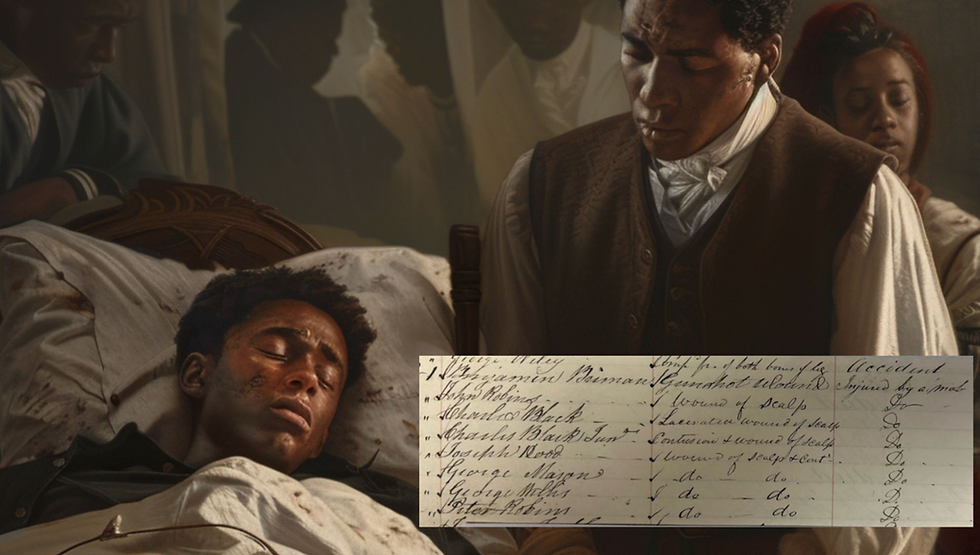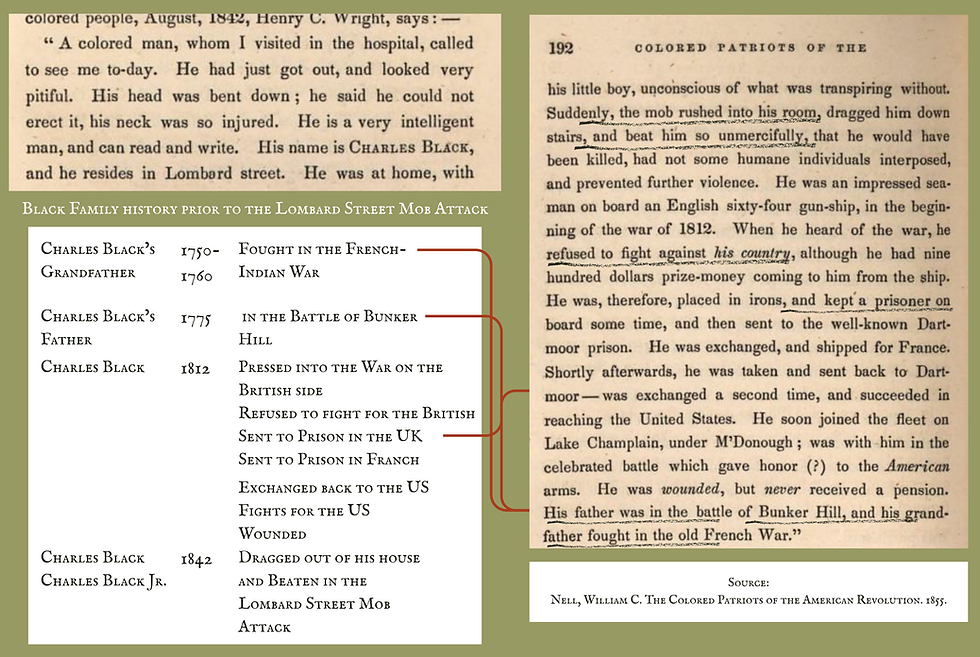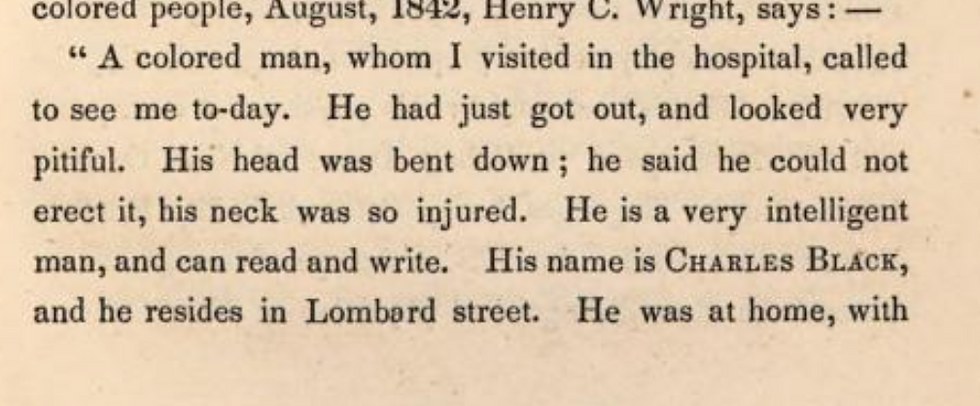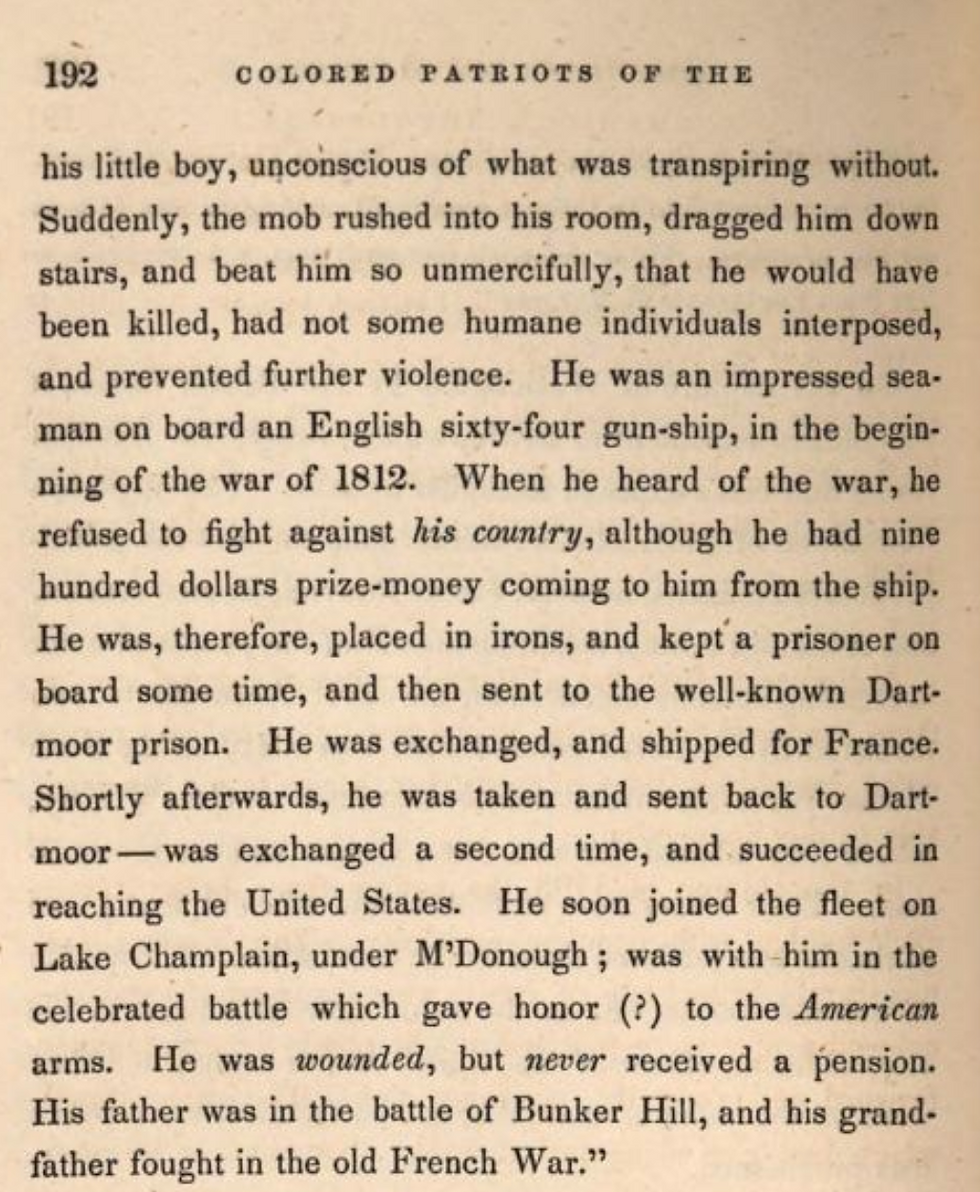Finding a Firsthand Account of the 1842 Mob Attack—in the Strangest Place; The Tale of Charles Black
- Michiko Quinones
- Jul 25, 2025
- 2 min read
Updated: Jul 25, 2025
I wasn't looking for Charles Black when I opened The Colored Patriots of the American Revolution. I was preparing for a public program on Robert Purvis.
Friends Historical Library staff and students have been researching what books Purvis read while in Byberry, and William C. Nell’s 1855 volume came up.
Out of curiosity, I flipped to the Pennsylvania section.
And there he was. Charles Black.
His firsthand account as a victim
of the August 1, 1842 Lombard Street mob attack, right there in a book about Black veterans of the Revolutionary War.
August 1, 2025 will be the 183rd anniversary of the Lombard Street Mob attack.
All of the first hand accounts I've read were noted by journalists on the ground. Robert Purvis's personal letters are another important source. But this one came from a transcription of a personal conversation that happened within the timeframe of the attack.
Years ago, I found the names “Charles Black” and “Charles Black Jr.” in the Pennsylvania Hospital intake records for the 1842 mob attack.

I didn’t know who they were, just that the entry for both father and son was filled with violent injuries. I made an ai image to honor them then, even though I couldn’t tell the whole story yet.

But what stunned me wasn’t just the testimony. It was the history that came with it.
Charles Black came from a long line of Black patriots who had served this country. His grandfather fought in the French and Indian War. His father fought in the Battle of Bunker Hill.

Charles himself was pressed into service by the British in the War of 1812, refused to fight, was thrown in prison in both the UK and France, then exchanged and returned to fight for the U.S. He was wounded. He never received a pension.
And in 1842, he was dragged out of his house on Lombard Street and beaten unconscious—while his child looked on.


A deep injustice for a man dedicated to his country.
This is why I randomly read sources, even when they don't seem relevant. Because when it comes to Black history, our stories are spread out in sources you wouldn't expect. They live in church ledgers, veterans' rolls, and books written for other purposes.
Black families were networked, deeply embedded in every era. And that means the archive can surprise you if you’re willing to wander.
Shoutout to Robert Purvis: still leading us, it seems, toward historical justice.
Sources:
Friends Historical Library staff and students research into the Byberry Library
See our Mob Attacks page for more detail on the attacks.
Go directly to the 1842 Mob Attack
Nell, William C. The Colored Patriots of the American Revolution. 1855.
Pennsylvania Hospital Admittance Records, August 1 and 2, 1842.




